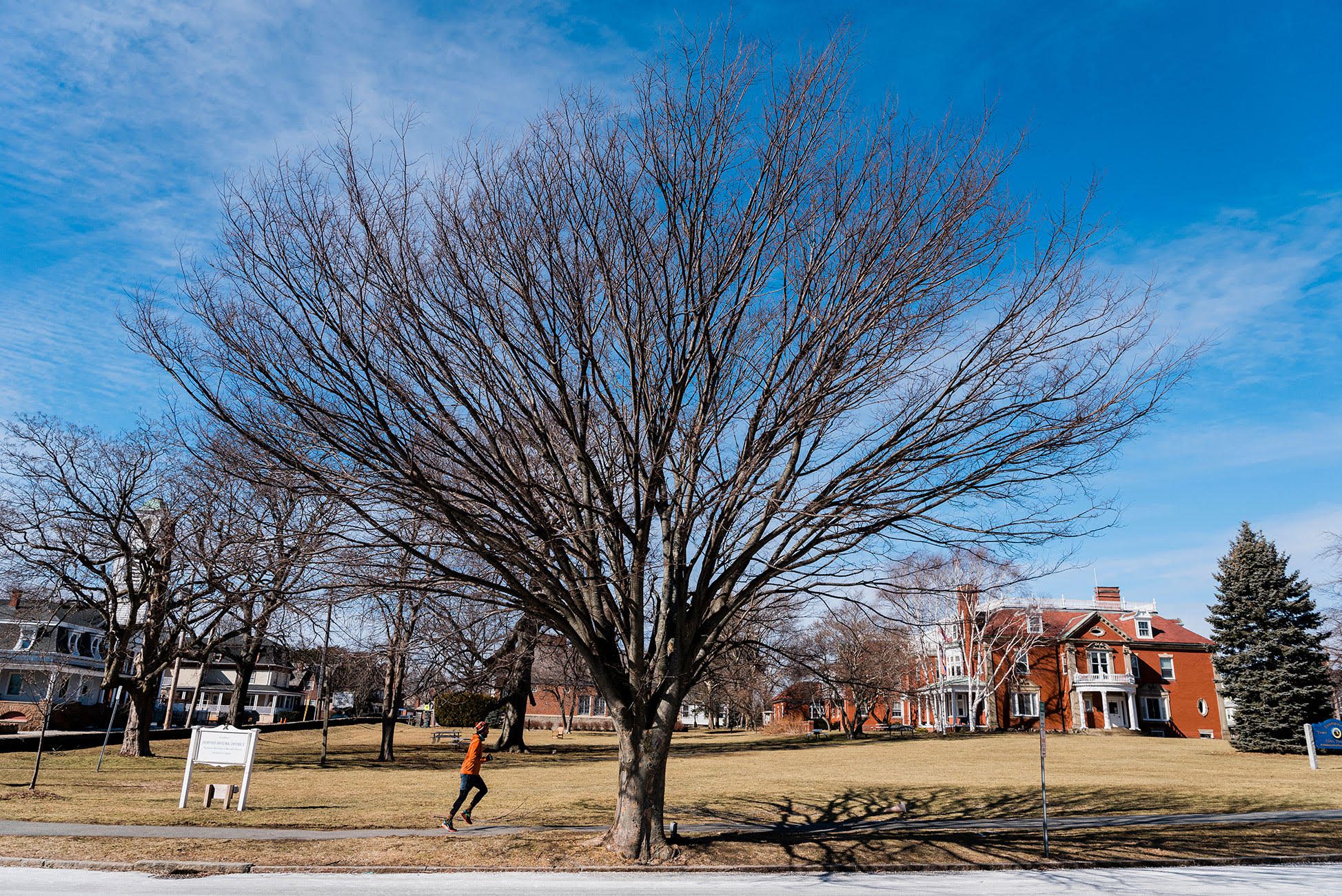SWAMPSCOTT — The Tree Advisory Task Force, which supervises the town’s public trees, is looking to become a stand-alone town committee.
“We as a group have come to the conclusion that it would be beneficial to the town to have a more formal arrangement to look after our green infrastructure in town by the creation of a Tree Committee, which would operate like any town committee does,” said Jim Olivetti, a member of the Tree Advisory Task Force.
The Tree Advisory Task Force was created about four years ago to look after the trees that grow on public and town-owned property like streets and parks. Because of the size of the town and the shortage of open space, public trees constitute a considerable part of the town’s green infrastructure and it is important to take care of them, said Olivetti.
Trees are also a major part of the town’s resiliency, said Olivetti, from stormwater maintenance and heat-island mitigation to carbon sequestration. That is why the town needs to take a proactive stance towards its trees.
Currently, the task force is a part of the Open Space & Recreation Plan Committee. It has six members who meet monthly and work closely with the town’s Department of Public Works (DPW).
Members of the task force believe that becoming a committee would help the task force gain more credibility and stature, provide it with more visibility and help it use the town processes to recruit new members and get more people involved.
At the last Select Board meeting, the Tree Task Force has secured support of the board for the creation of a Tree Committee, and is awaiting a formal vote in the near future, after details about the structure of the committee, its responsibilities and other specifics are fleshed out.
Among the current duties of the task force are updating the digital inventory of about 3,000 trees, which was created in 2016 and serves as a resource for managing and improvements of the tree canopy; writing grant applications; working with the DPW on maintenance of the public trees; promoting planting of new trees through various community programs and diversifying the species planted in the town.
The task force has recently applied for grant funding to maintain the trees around Town Hall and bring back an arboretum that used to be behind it. The team has found historic records about the trees that once grew there and would like to replant some of them.
Maintenance of the trees includes cutting back any dead limbs, treating the trees against pests and improving soil conditions to save the trees for the future, said Verena Karsten, one of the members of the task force. The DPW does the work required and updates the task force.
“Tree planting is a big effort for us,” said Karsten. “The canopy that we have in Swampscott is pretty aged. There are a lot of trees that are maybe at the end of their lifespan and were planted over 100 years ago, so rejuvenating the canopy is very important to keep it from falling apart and not being there anymore.”
At the request of the task force, the town allocated $40,000 in the 2022 capital-improvement budget for tree planting to address tree requests that have been piling up since 1997. Currently, there are 75 tree-planting requests from residents waiting to be fulfilled, Karsten said.
The task force recommends which tree to plant at which location based on various factors: the space available at each location, presence of power lines and preferences of the neighbors. Sometimes, residents ask for a specific kind of tree or a flowering tree to be planted.
The task force has also initiated a Tree Gift Fund, in which people can donate money for trees and a Memorial Tree Program, which allows residents to donate a tree for about $350 in memory of someone special.
Another achievement of the Tree Advisory Task Force is the Swampscott Trees Bylaw (Article XXVI of the General Bylaws) which was approved by the Town Meeting in fall 2020 and regulates trees on public right of ways and on town-owned property.
“There was an informal set of policies, but the Trees Bylaw codified these ad hoc policies into something that is now part of the rules of the town,” said Olivetti. “That was a pretty big step and something that most towns have and Swampscott needed.”
To diversify the tree canopy in Swampscott and advise the residents on best trees to plant in local conditions, the task force has created a recommended list of native species.
“There are trees that fit into the environment; the likelihood of them surviving is better and they serve as hosts and homes for the wildlife that is also native to the area,” said Olivetti. “There was a smaller list of trees that the town was planting and we expanded that.”
Karsten said that the task force has done so much in just several years, because they work as a very focused, tactical group.
“We can do a lot by really being focused on trees,” said Karsten.
She appreciates the trees for their diligent contribution to the environment and climate change, and for providing habitat and food for whole ecosystems.
Olivetti had taken up an interest in trees a long time ago, he said, but what motivates him to work on the Tree Advisory Task Force are his four granddaughters, who are all under 12 years old.
“It really is important for the older generations to make sure that there is a livable environment for young people, such as my grandchildren, when they get older. That motivates me to pay attention to the environment, generally, and trees, specifically,” Olivetti said.
Alena Kuzub can be reached at [email protected].

